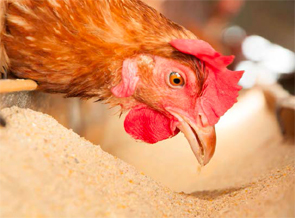
Image Credit: © Narong Jongsirikul-fotolia.com
The majority of major retailers and manufacturers worldwide now require their suppliers to implement competent food and animal feed safety management systems all the way through the supply chain. The trickle-down effect of this mandate, as well as the introduction of the Food Safety Modernization Act in the U.S., has brought animal feed safety control to the forefront of industry discussion over the past two years.
The implementation and certification of animal feed safety systems is not a recent development in some international circles. The “GMP Plus” program based in the Netherlands was one of the first that required ingredients exported to that country for use in animal feed to be independently certified against standardized Good Manufacturing Practices. In 1997, the Animal Nutrition Association of Canada sponsored the development of a third-party trained and audited feed safety control program, FeedAssure. This program has been adopted by the majority of leading animal feed manufacturers in Canada for over 15 years. The program has become so popular that the Canadian Food Inspection Agency has now reviewed the industry driven program and found it to be competent in controlling significant feed safety hazards, backed up with rigorous, annual third-party verification.
To compete in the new world of supply chain food safety, animal feed manufacturers across the U.S. are going to have to design, implement, and ideally undergo independent certification of their feed safety control systems. In this article, we will summarize some of the key implementation steps and areas of focus you must include to implement an effective safety control system within your animal feed manufacturing company.
The Plan
First, a “top-down” focus is essential, with defined roles for management and a clearly defined feed safety policy tracked through measurable objectives and regular management review. This is followed by setting up a multi-departmental feed safety team and structured communication channels, both external, with consumers, customers, service providers, suppliers, associations, and regulators, as well as internal, involving company departments, the feed safety team, and senior management. Competent training of the team and company staff is essential prior to designing a feed safety control system. The training should preferably be done by experienced trainers with practical system audit experience and a proven track record specific to the animal feed industry. Truly feed-focused training will increase staff buy-in, resulting in a more robust feed safety control system.
Once the infrastructure is established, you must define the scope and specifics of the hazards to be controlled within your feed safety system. This starts with defining the types of products, where they will be sold, any applicable regulatory or customer requirements, and details of any claims or sensitivities that could affect animal health or, through transmission, human health. Ingredients used in the feed manufacturing process, as well as process steps, equipment, and aids, must be detailed and verified. This is followed by intensive research into hazards associated with each ingredient or process step, as well as hazards from the process and storage environment, equipment, pests, or intentional sabotage of products or process. This research must also include details on how suppliers control hazards at their level and whether or not details of this control are verifiable through specification sheets, certificates of analysis, or review of supplier audit or certification reports.
The Hazard Analysis and Risk-Based Preventive Controls approach is an effective tool to structure identification and assessment, or risk rating, of significant hazards. It also serves to establish effective, sustainable, and demonstrable controls over these hazards. This approach enhances focus on “prerequisite programs” (PRPs) in controlling significant hazards, since these control the majority of feed safety hazards. These programs are broad-based controls such as cleaning, training, supplier monitoring/approval, pest control, equipment maintenance, and calibration, inspection, and premises controls. The use of “critical control points” (CCPs) and intermediate level controls, sometimes known as “operational prerequisite programs” (OPRPs) or “significant PRP control points” (SPCPs) assist in clearly defining control tasks and responsibilities to maximize consistent control over feed safety hazards. These can include controls over prohibited, ruminant source material, medications, and sensitive nutrients or additives. CCPs, OPRPs, or SPCPs are written into targeted feed safety control plans, including a control or critical limit, frequency, method and responsibility for the task, corrective actions to be taken if limits are not met, verification of the task, and required records. Once hazards and controls have been clearly identified, internal and supplier monitoring procedures must be reviewed and upgraded as required to ensure ongoing control of these hazards.
ACCESS THE FULL VERSION OF THIS ARTICLE
To view this article and gain unlimited access to premium content on the FQ&S website, register for your FREE account. Build your profile and create a personalized experience today! Sign up is easy!
GET STARTED
Already have an account? LOGIN
